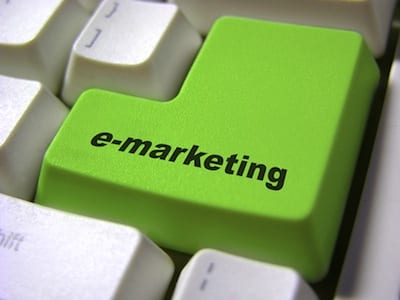 What are the best new ways to market a promising new field service business online? Alexander “Sander” Daniels, co-founder of the regional services portal Thumbtack, has grown his own business around finding new ways to source professional services — from house cleaning to marriage counseling to field service. The promise to small outfits operating on shoestring marketing budgets are obvious: for free or a nominal fee, businesses can list themselves in a local directory and tap into a stream of new customers. Daniels shared his marketing insights in a SmartVan Q&A.
What are the best new ways to market a promising new field service business online? Alexander “Sander” Daniels, co-founder of the regional services portal Thumbtack, has grown his own business around finding new ways to source professional services — from house cleaning to marriage counseling to field service. The promise to small outfits operating on shoestring marketing budgets are obvious: for free or a nominal fee, businesses can list themselves in a local directory and tap into a stream of new customers. Daniels shared his marketing insights in a SmartVan Q&A.
How can field services benefit most from new online services like this?
Most businesses are open to our pitch where we say, “we’d like to bring you more leads and more business.” The one thing that’s different in the field services sector versus others is that field service people are always on the go. So they use mobile a lot more than desktop so we’ve invested a whole lot of work into making our website mobile-friendly. We’ve run A/B tests on site design and optimization on mobile and it’s obvious that any time we make a page that’s mobile-optimized the pros love it and use it a lot more.
How can service companies can generate more customer leads?
The biggest new feature that we’ve had in the last year is something we’re pushing out this month. It’s called the “Public Questions” feature. Previously, we’d send businesses a lead with an email address, zip code and a ton of information about the lead. Then businesses would have to decide whether or not to respond or not. If they did, they’d have to pay. This new feature allows you to look at the lead and then ask questions to the consumer about the job before deciding to pay. The questions are public — all pros who received the lead can see the question and response.
We’ve found that a lot of pros are very savvy about this tool and using it to make sure the lead is the right type of job and that the consumer is engaged. Not every consumer lead is a good lead. If you ask questions and the consumer responds with good information, it can remove a huge pain point.
How have you managed to grow in a category dominated by companies like Craigslist and Yelp?
In the first three years we spent most of our efforts marketing to service pros, and we signed up about 250,000 across the country in all different types of categories. Over the last year, we haven’t spent much effort marketing to this group because we felt like we already had some good success. Instead we’ve been marketing towards consumers and and we’ve increased the number of consumers coming to our site about tenfold. Most of our traffic comes from Google search results. About five months ago we started doing a lot of paid advertising with Google AdWords, which makes up a big chunk of our traffic. We see about one million unique visitors per month.
There are fewer opportunities for smaller players to get into the [online local services directory] game because there’s a lot of consolidation at the top. HomeAdvisor is still the 800-pound gorilla in terms of home improvement leads. Angie’s List is starting to get really sophisticated in online marketing, so they’re starting to get a lot more online traffic. There are a lot of tech startups that are trying to get into the business: Bizarre.ly, TaskRabbit. They haven’t been that successful.
Why are so many more customers and businesses signing up?
More businesses are coming online than ever before. It might seem crazy to you and me that not 100 percent of businesses are online. A lot of small businesses are becoming more sophisticated with their marketing. Frankly it takes a certain amount of sophistication to participate in the lead generation game, but more businesses are figuring out that this is a good channel for them.
Consumer signups are lagging behind business signups. Consumers are, for the most part, still used to the directory model of finding local businesses. We’re trying to build a quote feature so consumers get more used to coming to a site, telling us what they need done, where, the problems they’re having and then getting quotes from a handful of businesses. Consumers are slower to adopt this model because it’s a big change in behavior to what there used to be before.

Thanks Jonny. Most of the footage is ARRI and we discovered the LUT was adding some weight to the project, but it only went down 6MB after we removed it. I did a test bringing in just the RAW footage and after attaching the proxies it doubled in size. This is a feature documentary and we have a lot of footage and a very tight schedule, so I’m worried the proxy workflow might slow us down in the future and I have started a new project just with the proxies. I would love not to loose the ability to connect to the raw footage, but thinking my project might slow me down after we start the edit worries me. The project with just the proxy files is only 6MB, while the project with the RAW media attached to proxies is 26MB. I know that 26MB might not be that big of a deal, but that is before creating any sequences.